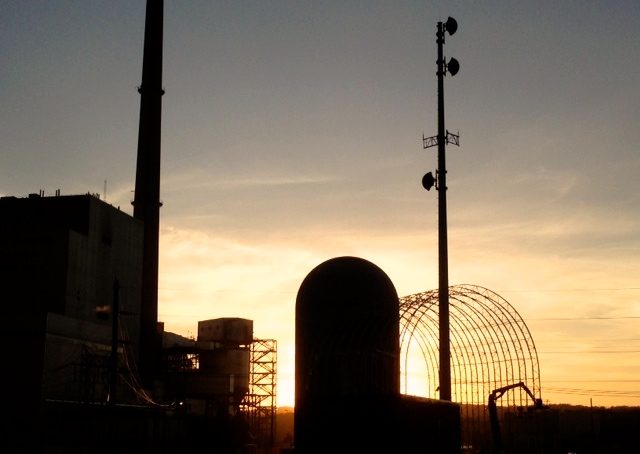
By Joe Rom
Think Progress (3/29/18)
Prices for solar, wind, and battery storage are dropping so rapidly that renewables are increasingly squeezing out all forms of fossil fuel power, including natural gas.
The cost of new solar plants dropped 20 percent over the past 12 months, while onshore wind prices dropped 12 percent, according to the latest Bloomberg New Energy Finance (BNEF) report. Since 2010, the prices for lithium-ion batteries — crucial to energy storage — have plummeted a stunning 79 percent (see chart).
“The economic case for building new coal and gas capacity is crumbling,” as BNEF’s chief of energy economics, Elena Giannakopoulou, told Bloomberg.
Things are only going to get tougher for gas and coal compared to renewables.
At the same time, solar and wind plants — which are increasingly being built with battery storage — are eating into the utilization of existing coal and gas plants, making them far less profitable. For instance, the super-efficient combined-cycle gas turbine (CCGT) plants that have been popular in recent decades, were designed to be used at full power between 60 percent and 90 percent of the time.
But their actual utilization rate (also called the “capacity factor”) has been plummeting in recent years, and is now close to a mere 20 percent in countries as diverse as China, Germany, and India (see chart).
Arizona regulators “recently refused to endorse plans by three power companies that included more natural-gas facilities,” the New York Times reportedWednesday. “Commissioners directed them to make greater use of energy storage and plants that produce zero emissions.”
In California, the world’s sixth-biggest economy now mandates that half its power in 2030 be renewable. With solar and wind prices plummeting, NRG Energy recently said it would shutter three gas-fired plants. …
*****
Dairyland Power nuclear power plant decommissioning, at Genoa, WI.
Company Dismantling Genoa Nuclear Plant Spilled Radioactive Water Into Mississippi River
By Chris Hubbuch
The La Crosse Tribune (3/26/18)
The tritium discovered last month in groundwater in Genoa was not the first radioactive material released in the decommissioning of the former Dairyland Power nuclear plant.
LaCrosseSolutions, the company in charge of the $85 million project, accidentally spilled 400 gallons of radioactive water into the Mississippi River last year, though the Nuclear Regulatory Commission says there was little risk to public health.
The NRC last month determined that the spill was a violation of federal regulations, one of three low-level violations identified in the annual inspection of the decommissioning operations at the La Crosse Boiling Water Reactor. None of the violations resulted in a citation.
On Feb. 23, 2017, a radiation protection technician discovered that a garden hose attached to a sump pump had been left overnight in a 20,000-gallon tank of waste water collected in the course of dismantling the reactor containment building, according to reports filed with state and federal regulators.
The hose, intended to return water to the tank from a surrounding containment area, siphoned contaminated water back out of the tank, and some of the water spilled over the top of a berm and into a storm sewer that drains into the nearby river, according to the reports.
An analysis found cesium-137 in water samples at concentrations of 0.000001 to 0.00000286 microcuries per milliliter, which exceed the federal limits for effluent. That translates to a potential dose of 0.005 to 0.01 milirem for a person who drank the contaminated water for a year. …
(Commoner Call photos by Mark L. Taylor, 2018. Open source and free to use with link to www.thecommonercall.org )


